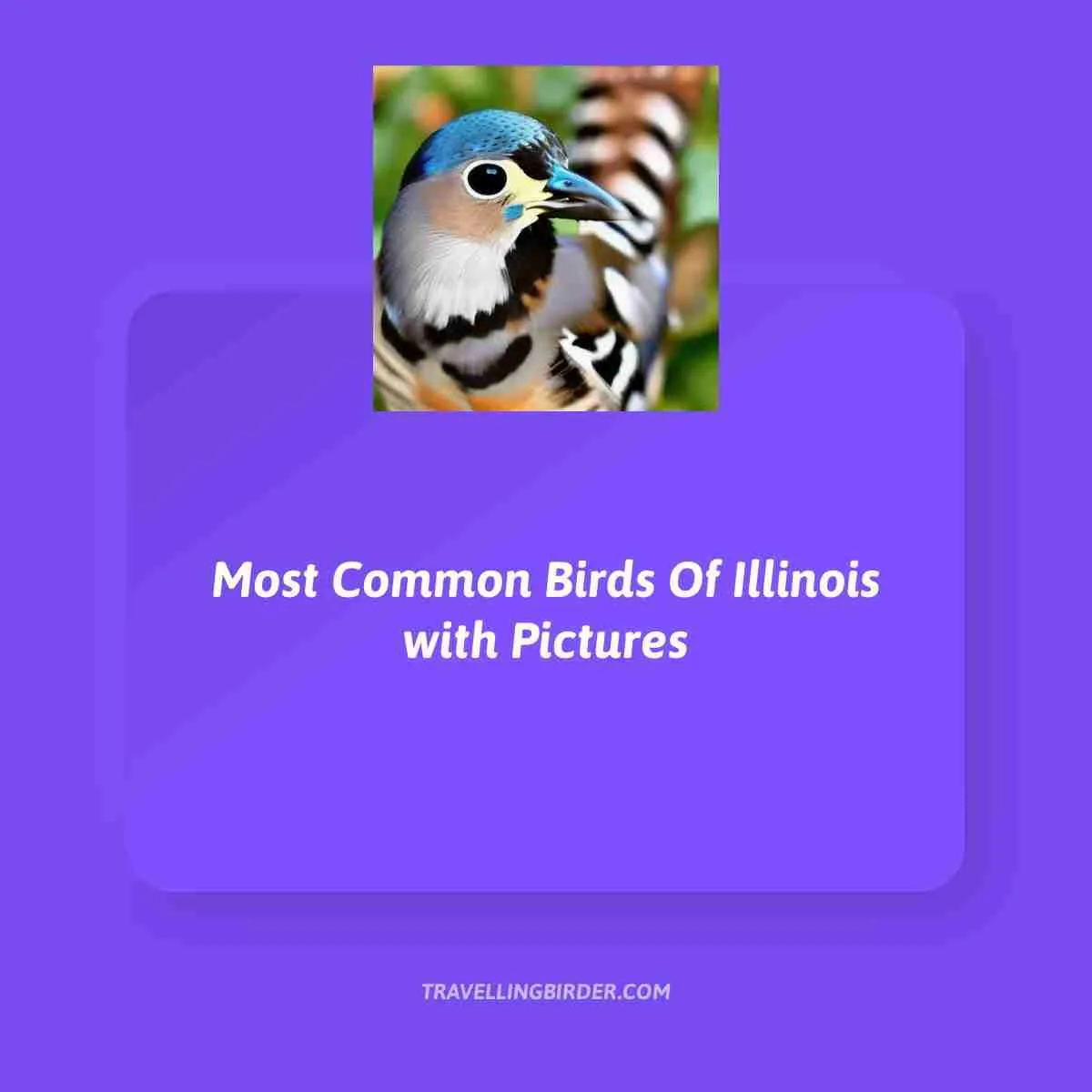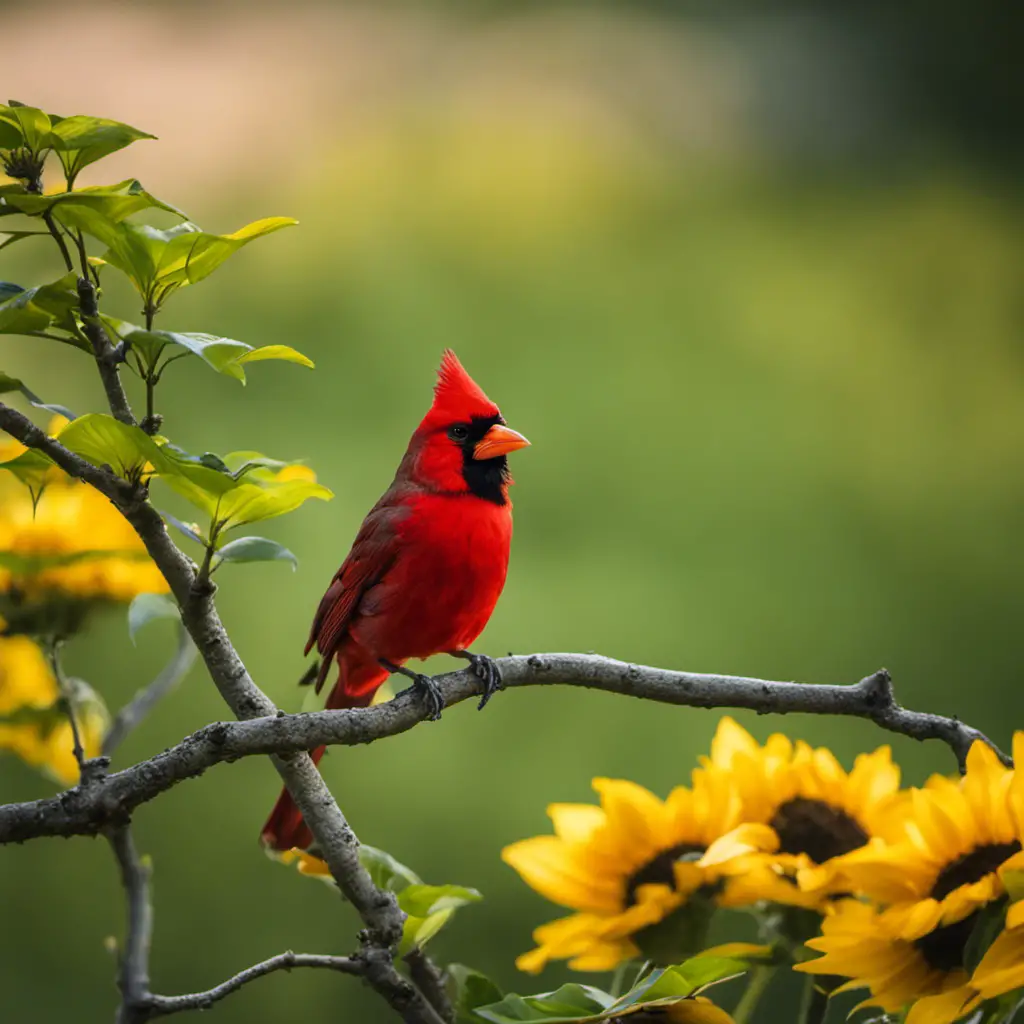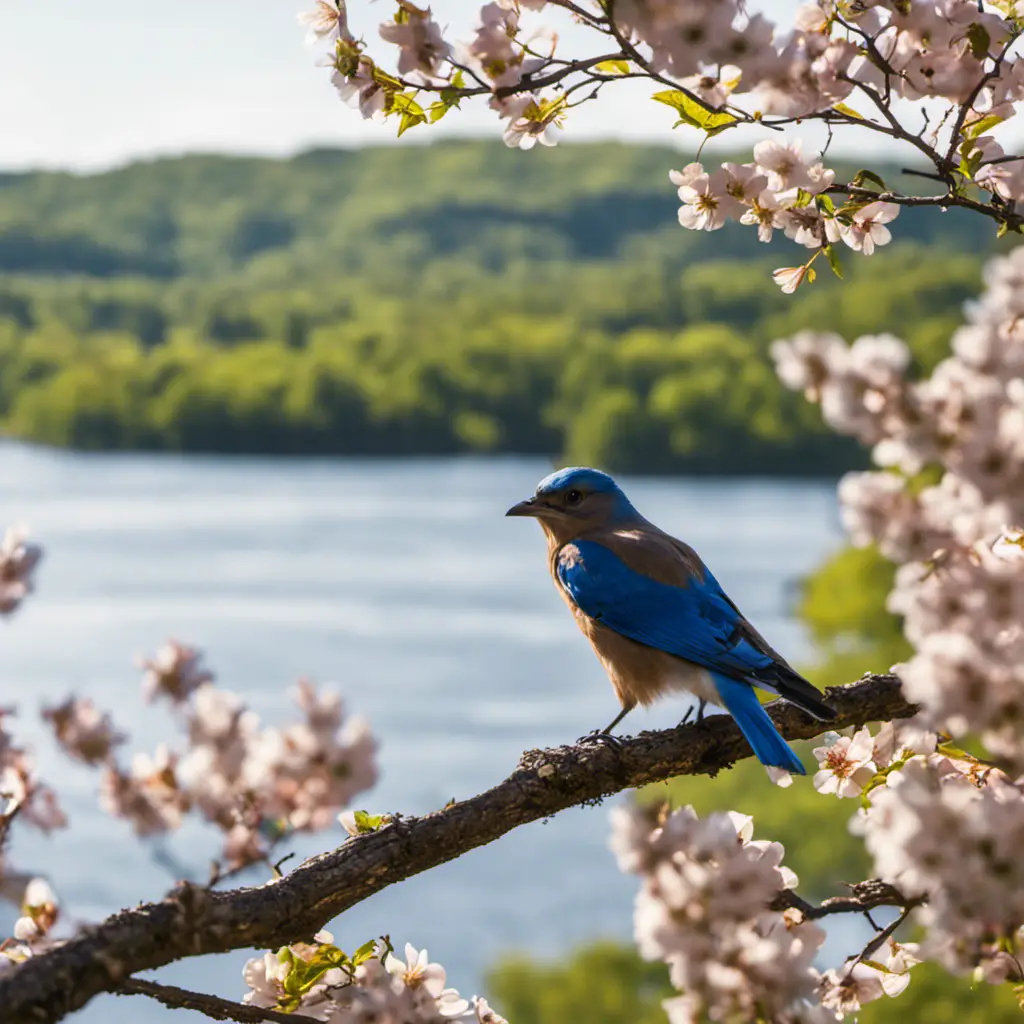Did you know that West Virginia is home to over 240 different species of birds? Of these, around 60 are considered common. In this blog post, we will take a look at some of the most common birds in West Virginia. We will discuss their physical characteristics, where they live, and what they eat. If you’re interested in learning more about the birds of West Virginia, then this blog post is for you!
Birds in West Virginia:
American Goldfinch
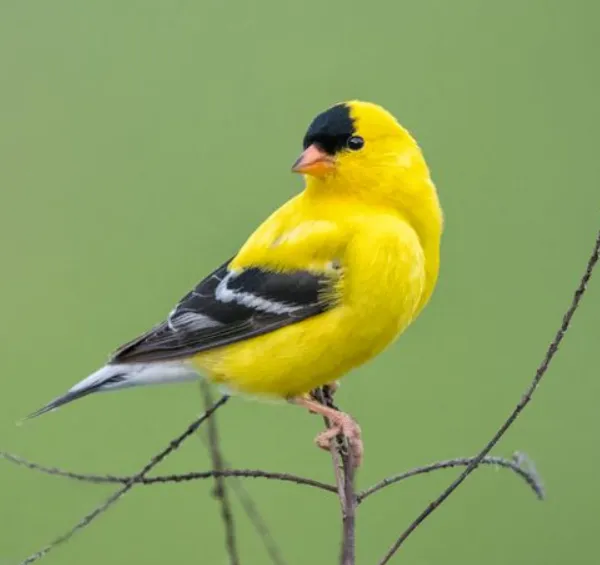
The American Goldfinch is a small, sparrow-sized bird with a wingspan of about eight inches. The adult male has a yellow body with black wings and tail. The female is similar in appearance but has a greenish tint to her plumage. Juveniles are brownish with greenish wingbars.
Goldfinches are seed eaters and are often seen in flocks feeding on thistle seeds and other small seeds. They nest in trees, building their nests of plant fibers and down. Goldfinches are found in open habitats such as fields, meadows, and parks throughout the United States.
These sociable birds often travel and feed in flocks. In the winter, goldfinches may form large flocks of several hundred birds. During the breeding season, however, they are more territorial and pairs will defend a small area around their nest site.
Goldfinches are active songbirds and their cheerful songs can often be heard in spring and summer. American Goldfinches are fun little birds to watch and listen to.

House Finch
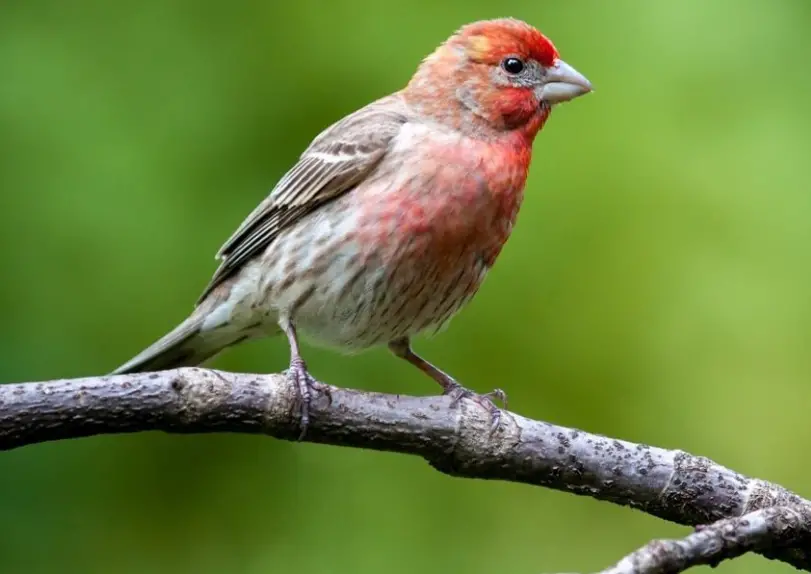
The House Finch is a small bird with red feathers on its head, back, and tail. The male House Finch has brighter red feathers than the female. These birds are found in woodlands, gardens, and parks across North America.
The diet of the House Finch includes seeds, fruits, and insects.
The average size of a House Finch is about five inches long.
The habitat of the House Finch includes open woodlands, gardens, and parks.
The behavior of the House Finch includes singing, nesting in trees or shrubs, and flying in flocks.

Song Sparrow
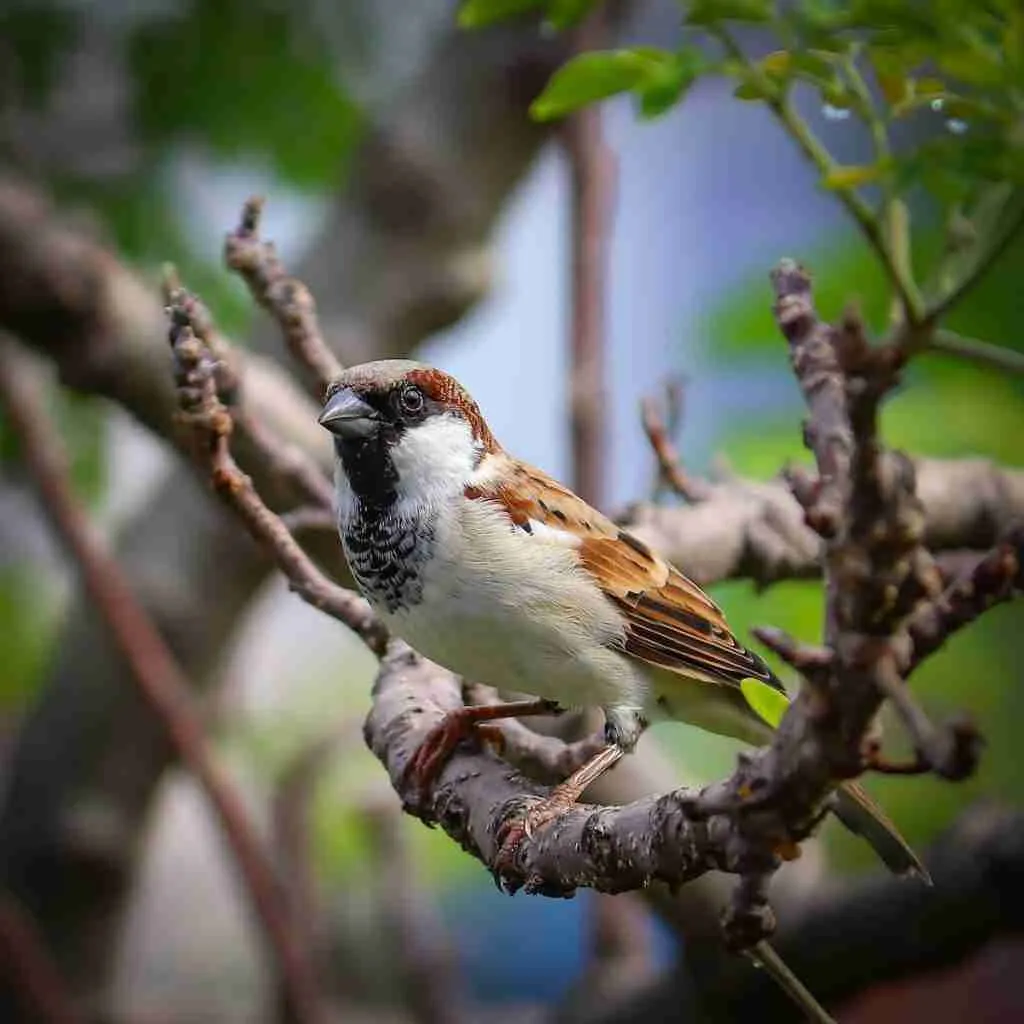
Song Sparrows are one of the most common and widespread birds in West Virginia. They are small sparrows with streaked dark brown upperparts, white underparts, and a brown-streaked gray head. Their diet consists mostly of insects and black oil sunflower seeds. Song Sparrows breed in open habitats across North America, including forests, meadows, prairies, marshes, and shrublands.
build cup-shaped nests made of grasses, bark strips, and plant down, which are usually placed in a shrub or on the ground. Song Sparrows are generally shy birds that keep to themselves, but they will sometimes form small flocks outside of the breeding season.

House Sparrow
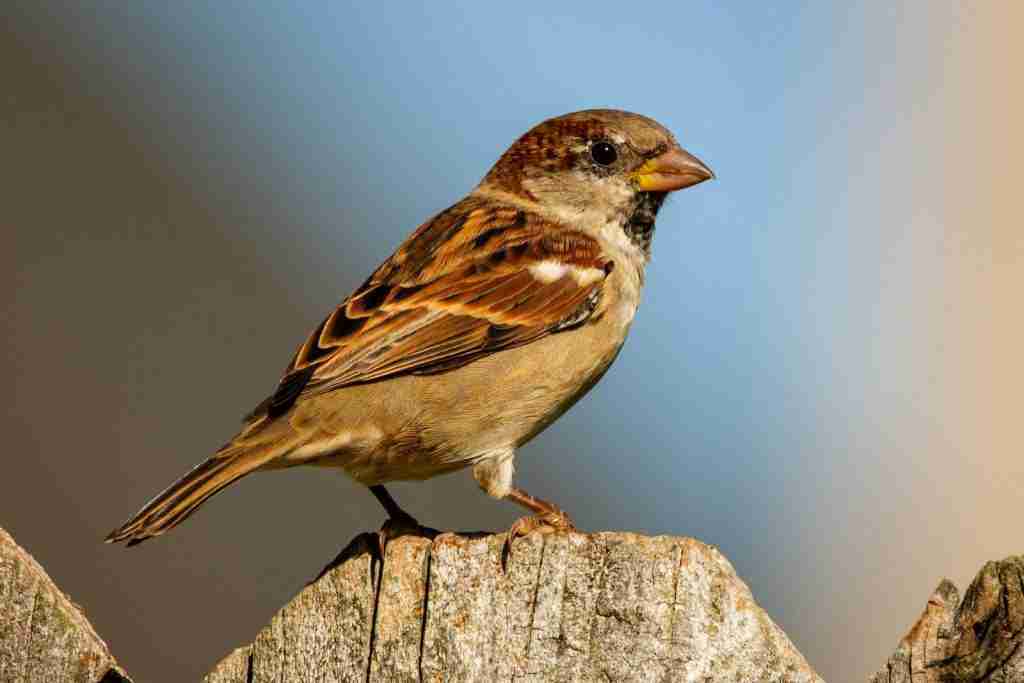
House Sparrows are small brown birds and gray underparts. They have a black throat and bill, and a white chin. Males have gray crowns and napes, while females have brown crowns. Juveniles look like females but with streaks on their backs. These birds range in size from 15-20 cm long with a wingspan of 25-30 cm.
House Sparrows are found in a variety of habitats including forests, grasslands, and urban areas. They prefer to build their nests near humans in bushes, trees, or on ledges. These birds are not afraid of humans and will often approach them for food. House Sparrows eat mostly black oil sunflower seeds and insects.

Downy Woodpeckers
(Picoides pubescens)
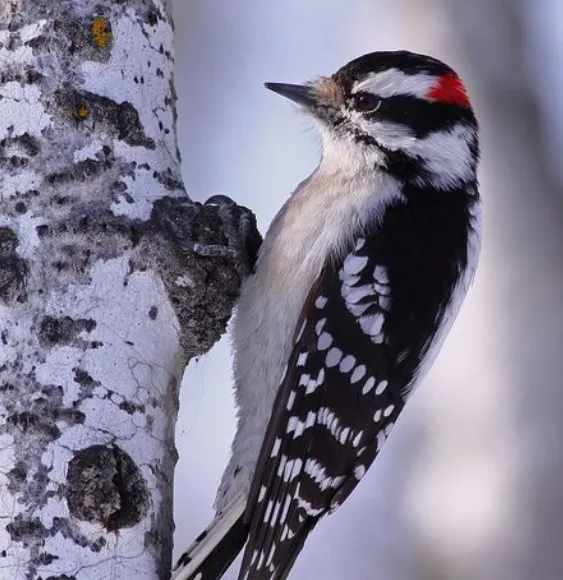
The Downy Woodpecker is the smallest woodpecker in North America, measuring just six to seven inches in length. The downy has a black back and wings with white stripes running along the sides. Its belly is also white, and its head is black with a small patch of white feathers on each cheek. Males have a small red patch on the back of their heads, while females do not.
The Downy Woodpecker feeds primarily on insects, although it will also eat berries and other fruits. It uses its strong beak to drill into tree bark in order to reach the insects underneath. The downy is a common sight at backyard bird feeders, where it will eat suet and black oil sunflower seeds.
The Downy Woodpecker is found in woodlands throughout North America. It prefers deciduous forests, but can also be found in coniferous forests, urban parks, and suburban yards. The downy nests in tree cavities, often using the same nest site for several years in a row.

American Crow
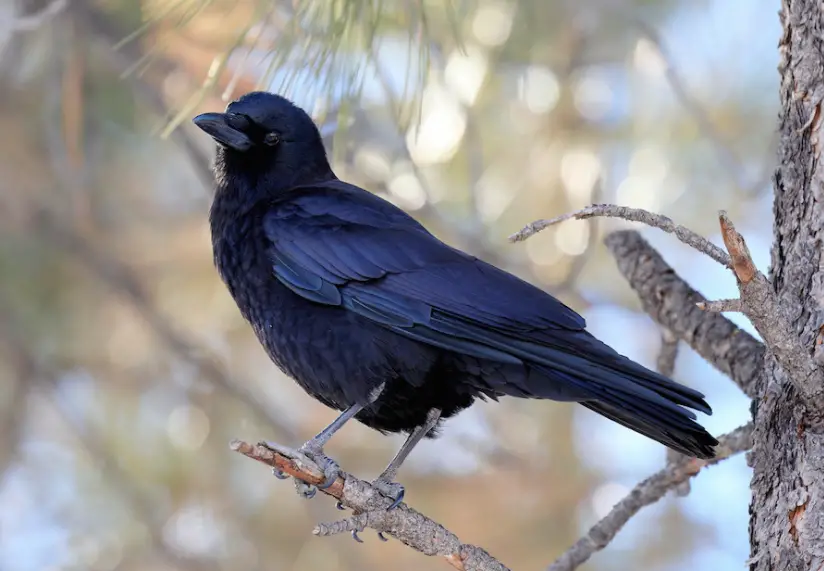
American Crows are a species of bird that can be found in West Virginia. They are small birds with brown and white feathers. Their diet consists mainly of insects and berries. They live in trees and shrubs, and their behavior is mostly active during the day.
American Crows are small birds, averaging about six inches in length. The adult birds have brown and white feathers, with brown back and wings. The belly is white, as are the undertail coverts. There are two white bars on the wing, and the tail is brown with white tips. The bill is black, and the legs and feet are pink.
The diet of American Crows consists mainly of insects and berries. During the breeding season, they will also eat nectar and pollen from flowers. They forage for food in trees and shrubs, using their beaks to pick insects off of leaves and branches.

Dark-eyed Junco
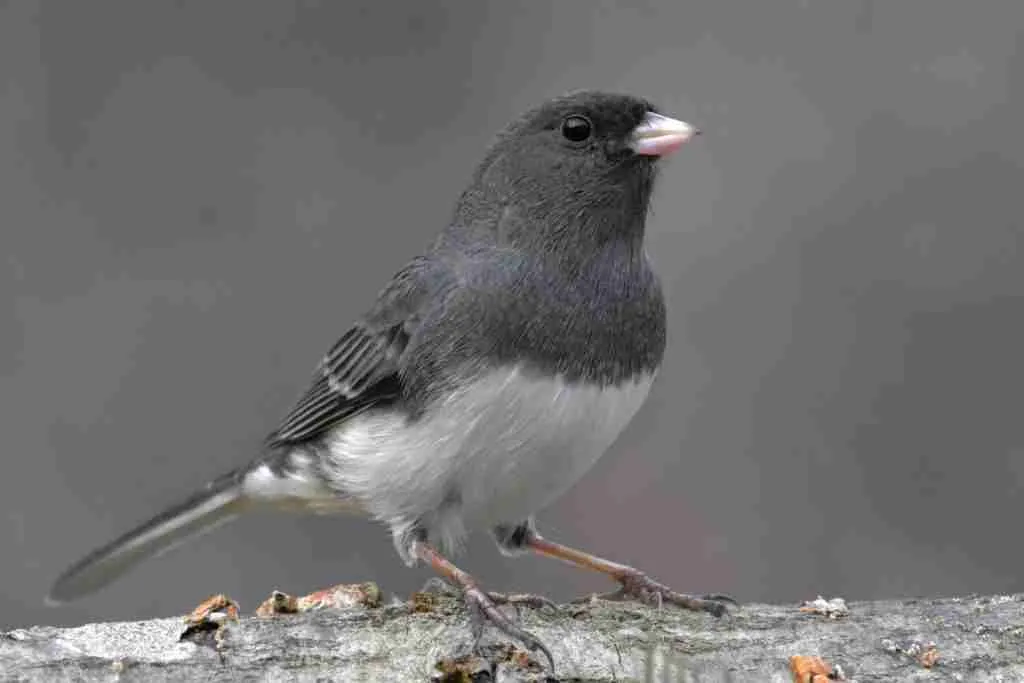
(Junco hyemalis): This small songbird is one of the most common birds in West Virginia. It has a gray body with a white belly and black wings with white wing bars. The head is usually darker than the body. The bill is pinkish-gray, the legs are dark, and the eyes are brown.
The Dark-eyed Junco is a ground-feeding bird and forages on the ground in open areas or understory of forests. It primarily eats insects and black oil sunflower seeds.
The Dark-eyed Junco is about six inches long with a wingspan of eight to ten inches.
This bird is found in mountainous regions in North America during the summer months. It is a migratory bird and spends the winter months in southern regions of the United States.
The Dark-eyed Junco is a social bird and often forms flocks with other birds. It has a variety of vocalizations including trills, chips, and tweets. This bird will also sing a distinct song during the breeding season.

Chickadees

Chickadees are small songbirds with black caps and bibs. They have gray upperparts, white underparts, and a short tail. Chickadees are found in woods and forests throughout North America.
These birds are acrobatic and can often be seen hanging upside down while feeding on insects or seeds. Chickadees are social birds that often travel in small flocks. They are known for their cheerful songs which they often sing while in flight.
The Chickadee is a small bird that can be found in woods and forests throughout North America. These birds are acrobatic and can often be seen hanging upside down while feeding on insects or black oil sunflower seeds. Chickadees are social birds that often travel in small flocks.
They are known for their cheerful songs which they often sing while in flight. Chickadees have black caps and bibs with gray upperparts and white underparts. Their short tails make them easily recognizable.
These birds typically grow to be about four inches long and have a wingspan of seven to eight inches. In the winter, they often feed on berries. Chickadees typically nest in trees or shrubs.
Their nests are made of grass, moss, and hair lined with feathers. Chickadees will often reuse their nests from year to year. These birds typically lay six to eight eggs per clutch.

Chipping Sparrow
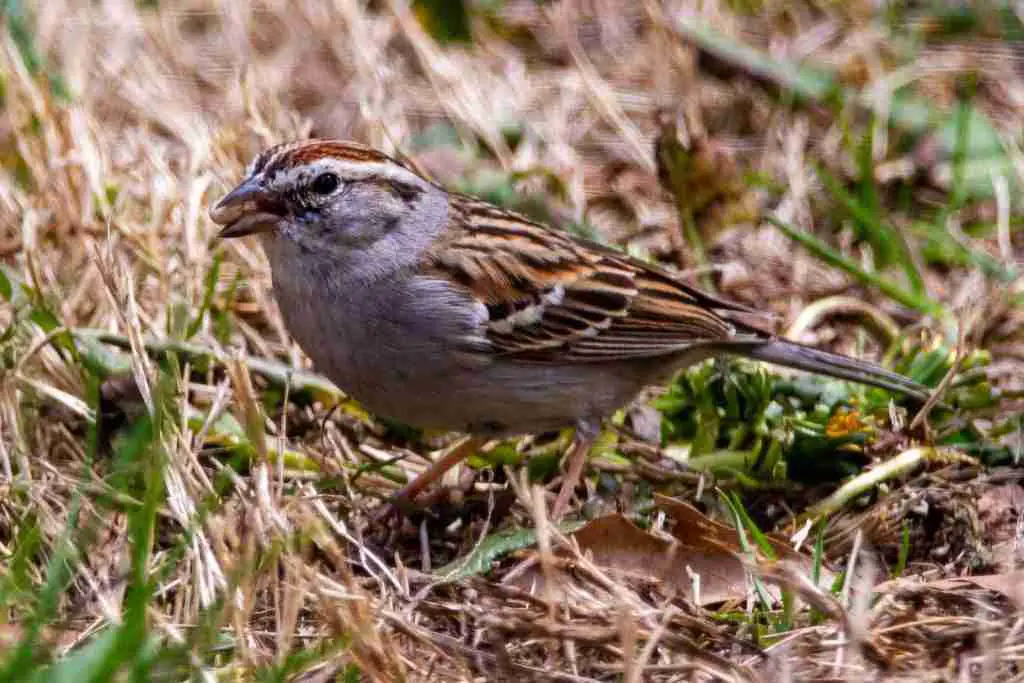
Chipping Sparrows are small sparrows with brown upperparts and gray underparts. They have a light-colored breast with dark streaks, a white throat, and a small bill.
These birds are found in open woodlands, brushy areas, and gardens. Their diet consists of insects, seeds, and berries. Chipping Sparrows are about five inches long and weigh about one ounce.
The Chipping Sparrow is a small sparrow with brown upperparts and gray wings and underparts. The upperparts may have a reddish or cinnamon tinge. They have a light-colored breast with dark streaks, a white throat, and a small bill.
The bill is black with a pale pink base. These birds are found in open woodlands, brushy areas, and gardens. Their diet consists of insects, seeds, and berries. Chipping Sparrows are about five inches long and weigh about one ounce.
The habitat of the Chipping Sparrow includes open woodlands, brushy areas, and gardens. In the winter months, they may be found in more urban areas such as parks and yards.
The Chipping Sparrow is a generally passive bird. However, they will defend their nests aggressively if necessary. These birds typically mate for life and form small flocks outside of the breeding season. Chipping Sparrows are monogamous breeders.
The female builds the nest which is usually made of grass, leaves, and other plant material. The nest is typically built in a tree or shrub. The female lays three to five eggs which are incubated for 12 to 13 days. Both parents help care for the young birds. Chipping Sparrows typically have two broods per year.

Eastern Towhee – Pipilo erythrophthalmus

The Eastern Towhee is a bird in the sparrow family. It is about 22 cm long with a black head, back, and tail. The breast and belly are white with black spots. The wings are brown with white bars. This bird is found in woods in eastern North America. It eats insects, berries, and black oil sunflower seeds.
The Eastern Towhee is usually silent but sometimes it sings a loud song. This bird nests in trees or on the ground. The female lays four to six eggs which are greenish-blue with brown spots. Both parents feed the young birds.
The Eastern Towhee is a shy bird but will come close to people if there is food around. It will also come to bird feeders. This bird is active during the day. It is also known as the Rufous-sided Towhee and the Ground Robin.

American Robin – Turdus migratorius
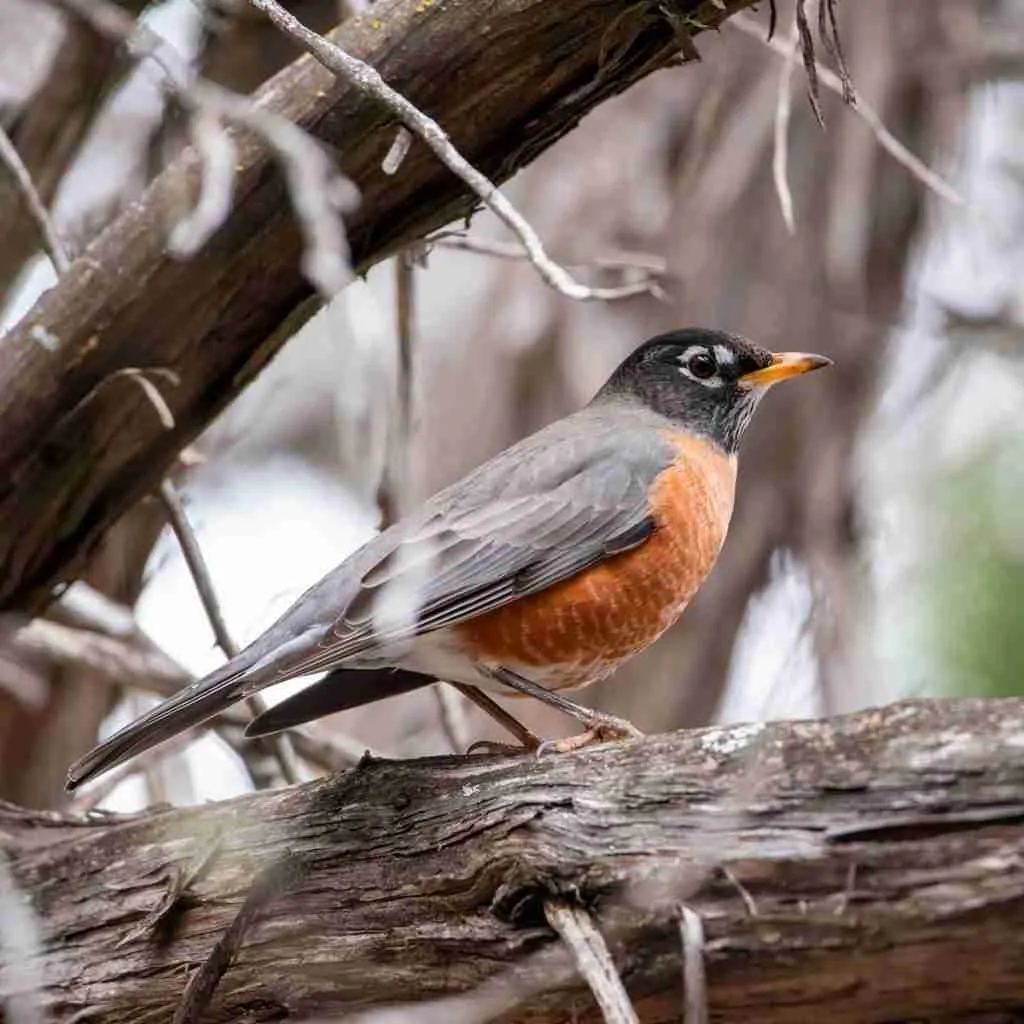
The American Robin is a migratory songbird of the true thrush genus and Turdidae, the wider thrush family. It is named after the European robin because of its reddish-orange breast, though the two species are not closely related, with the European robin belonging to the Old World flycatcher family.
The American robin is widely distributed throughout North America, wintering further south than its northern breeding range. It is the state bird of Connecticut, Michigan, and Wisconsin. According to some sources, the American robin ranks seventh on a list of the continent’s most familiar birds.
Identifying Characteristics: The adult male has brilliant rusty-red upperparts and a dark black head with a blue-gray back. The underparts are white, and the tail is black with white corners. Females are similar but have duller colors overall. Juveniles have browner upperparts, a paler throat, and no red on the breast.
Diet: The American robin eats mostly insects, earthworms, berries, and fruits. It is one of the first birds to sing at dawn and its song consists of several phrases.
Size: The American robin is about 16 cm (61/ inches) long with a wingspan of about 38 cm (15 in).
Habitat: The American robin breeds in open woodlands, gardens, parks, and yards. It is a very adaptable bird and can also be found in urban and suburban areas.
Behavior: The American robin is an active bird that is constantly on the move in search of food. It often flicks its tail while walking and will hop instead of walk when foraging for food on the ground. The bird is also known for its bathtub habits and will often bathe in puddles or even rainwater that has collected in depressions in the ground.

Mourning Dove – Zenaida macroura
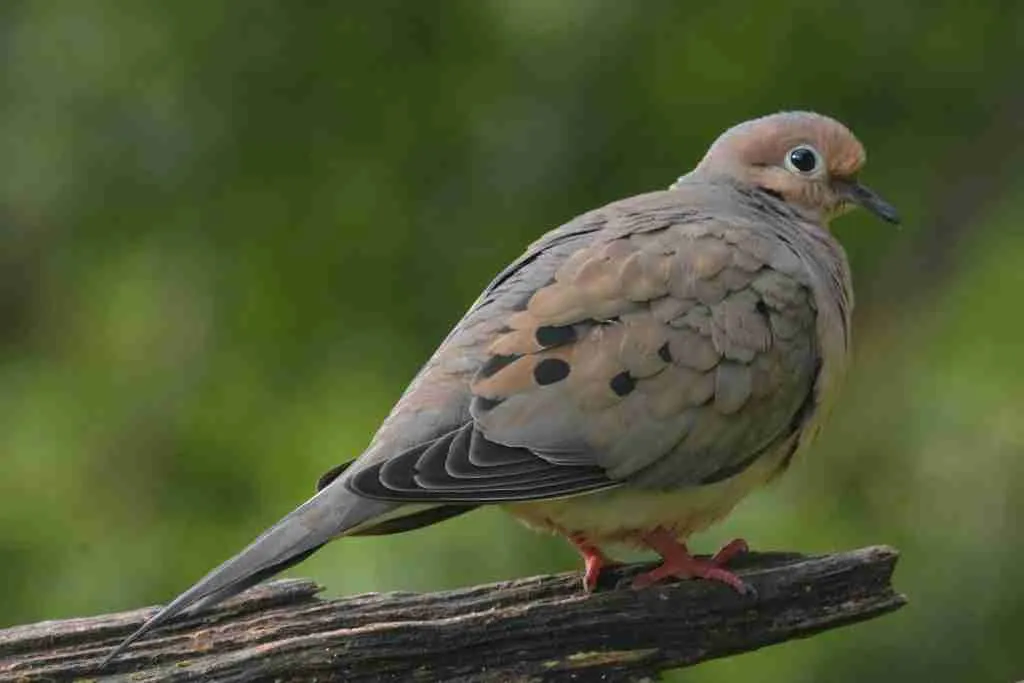
The mourning dove is a member of the bird family Columbidae. The species ranges from 12 to 14 inches in length and has a wingspan of 21 to 24 inches. Mourning doves are grayish-brown with black spots on their wings and tail. The bill is long and pointed, and the legs are short. The eyes are red.
The mourning dove is a seed eater, and its diet consists mostly of seeds from weeds, grasses, and trees. The bird will also eat insects and berries. Mourning doves are found in open country with some trees or shrubs. They nest in tree cavities, on window ledges, in bushes, or on the ground.
The mourning dove is a migratory bird, and its range includes most of North America. The bird breeds in the spring and summer months. The nest is made of twigs, leaves, and grass, and usually contains two eggs. Both parents care for the young birds.

European Starling – Sturnus vulgaris
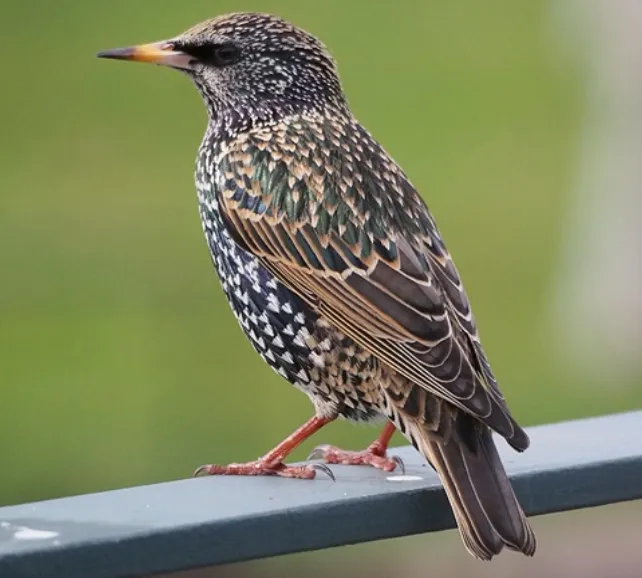
The European Starling is a small to medium sized bird with sleek black feathers and yellow eyes. It has a long, pointed beak that it uses to eat insects. The European Starling is about the same size as a sparrow.
The European Starling is found in Europe, Asia, and Africa. In North America, it is found in the eastern United States and Canada. The European Starling prefers to live in open areas near forests.
The European Starling is a social bird that often forms flocks with other birds. It is an aggressive bird that will chase away other birds from its territory. The European Starling is also known to destroy crops and nesting sites of other birds.
The European Starling is not a protected bird in the United States, which means that it can be hunted. However, because it is such an aggressive bird, it is not a popular game bird. The European Starling was introduced to North America in the 1800s. It is now one of the most common birds in West Virginia.

Summer Tanager – Piranga rubra
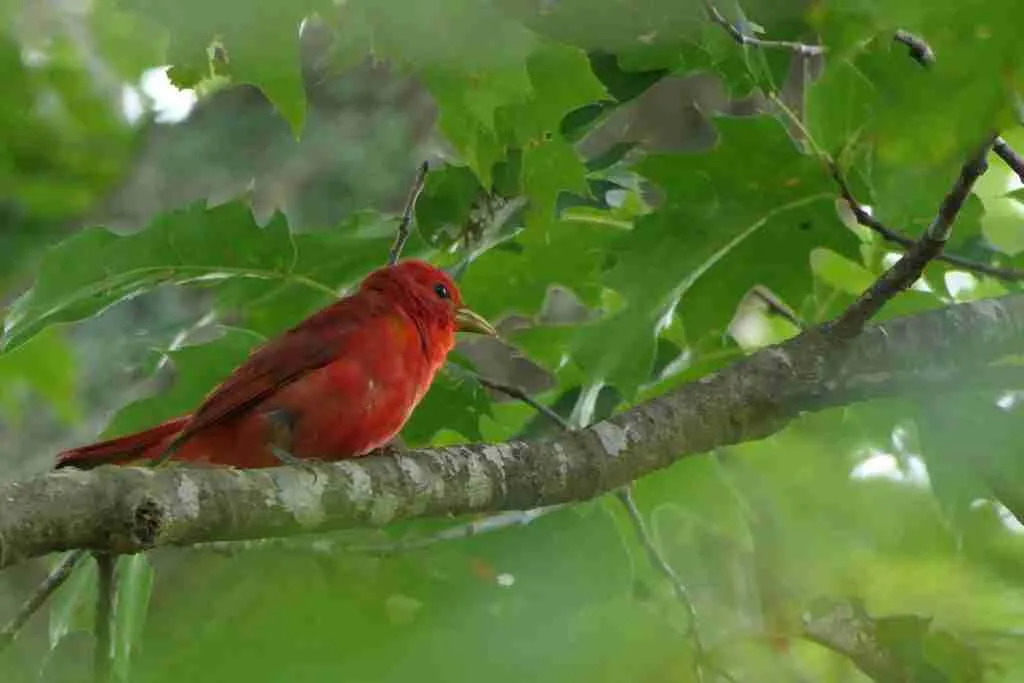
The Summer Tanager is a medium-sized songbird with a stout body and long tail. Males are a brilliant red color all over, while females are yellowish-green with reddish wings.
Both sexes have black eyes and legs. This bird can be found in woodlands and forests throughout the eastern United States during the summer breeding season. In winter, they migrate to Mexico and Central America.
The Summer Tanager feeds on insects, berries, and fruits. They often eat caterpillars and other larvae. To find food, they will sometimes follow Army Ants as they march through the forest floor. This bird uses its strong beak to crack open seeds and nuts.
The Summer Tanager is about 18cm long and weighs 40-50 grams.

Cape May Warbler – Setophaga tigrina

The Cape May warbler is a small songbird. The adult has yellowish-olive upperparts, heavily streaked with black, and a yellow throat and breast.
There are two white wingbars, and the rest of the underparts are mostly white with some black streaks on the sides. The bill is short and pointed. This bird is about 13 cm (five inches) long. The female is similar to the male, but she has less black on her upperparts.
The Cape May warbler breeds in mixed woodlands in northeastern North America. It nests in a tree cavity or nest box, and lays four to six eggs. This warbler is named for Cape May, New Jersey, where it was first collected in 1811.
The Cape May warbler eats mostly insects. In the summer, it feeds on caterpillars, beetles, and other insects. In the fall and winter, it eats spiders and other small invertebrates.
This warbler is a fairly common breeder in its range. However, its population has declined by about 50% since 1966, largely because of habitat loss. The Cape May warbler is listed as a species of “least concern” by the IUCN.
The best time to see this warbler is in the spring and summer, when it is breeding in its northeastern North American range. In the fall, it migrates to the Caribbean and Central America. During its winter migration, this warbler sometimes visits Florida and other southern states.

Scarlet Tanager – Piranga olivacea
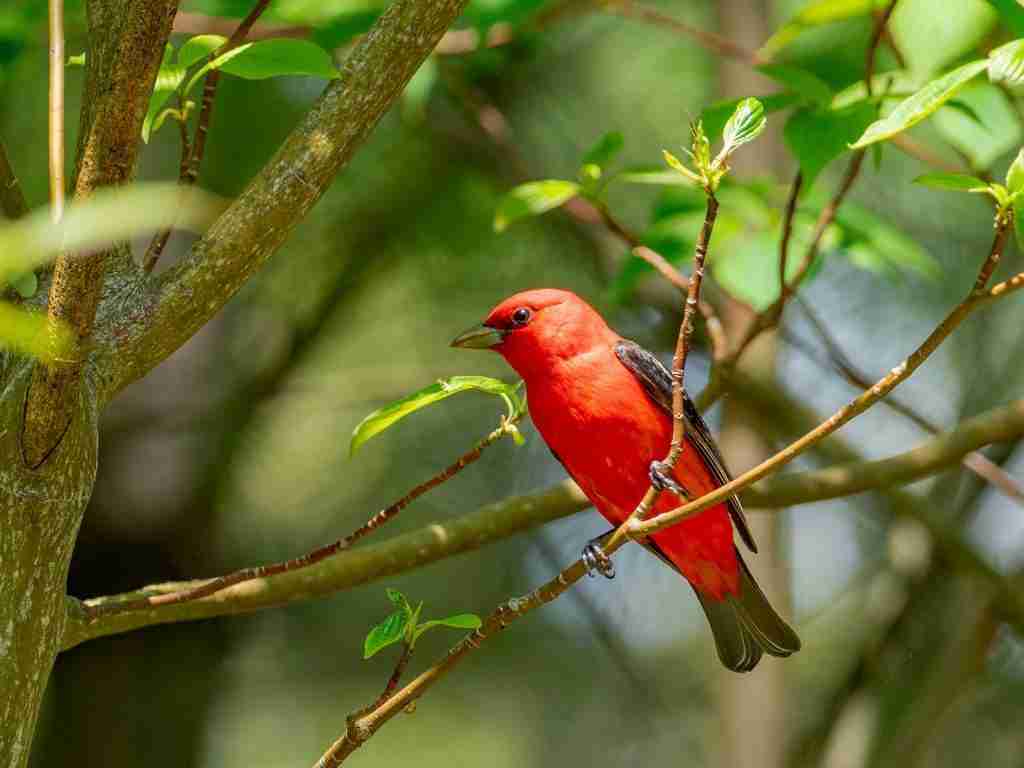
The Scarlet Tanager is a striking bird with a bright red body and black wings. These birds are fairly small, measuring only about six inches in length.
Their diet consists mainly of insects, which they catch by swooping down from branches and bushes. They can be found in forests and woodlands throughout the eastern United States during the summer months.
During the winter, they migrate to Central and South America. Scarlet Tanagers are not very vocal birds, but they will sometimes make a soft “chip” sound.
These birds are not currently considered endangered, but their populations have been declining in recent years. habitat loss and fragmentation are thought to be the main reasons for this.

Indigo Bunting – Passerina cyanea
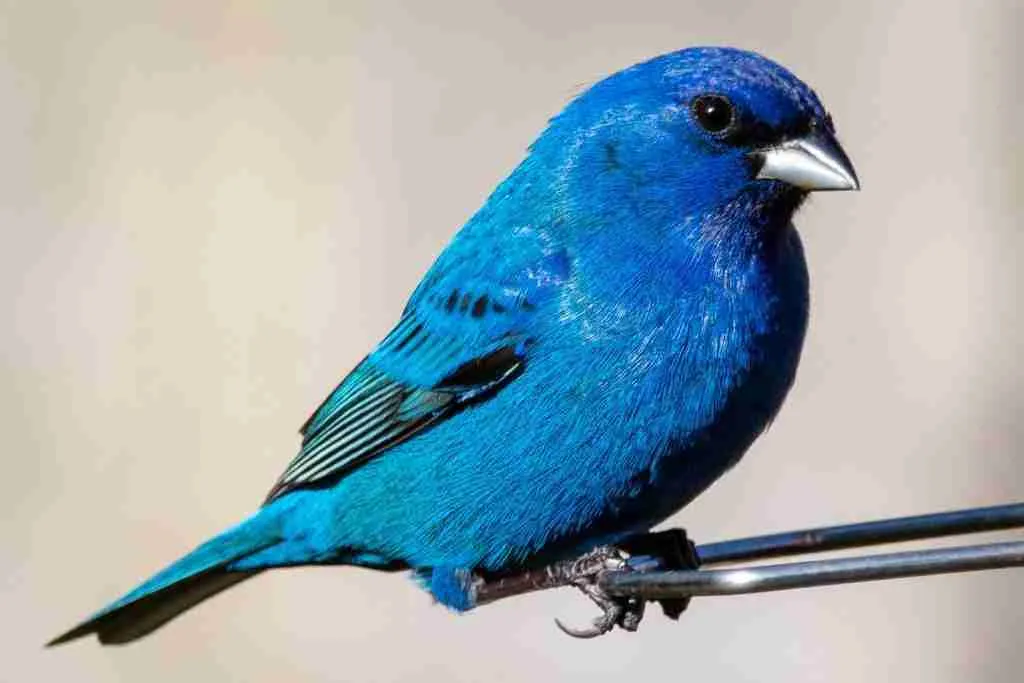
The Indigo Bunting is a small seed-eating bird in the family Cardinalidae. They are migratory birds, breeding in eastern North America and wintering in Central America.
The adult male has brilliant blue plumage, while the female is mostly brown with some blue on the wings. Both sexes have black legs and feet.
The Indigo Bunting is about five and a half inches long with a wingspan of eight to nine inches. They weigh between eighteen and twenty-two grams. The Indigo Bunting eats mostly insects, but will also eat some fruits and seeds.
The Indigo Bunting breeds in open woodlands, forest edges, and fields. They make their nests in trees or bushes, usually close to the ground. The female lays three to five eggs which are incubated for twelve to thirteen days.
The Indigo Bunting is a non-vocal bird, but the males will sing a beautiful song during breeding season. This song has been described as “liquid notes poured from a bottle”.
The Indigo Bunting is a shy bird and is not often seen. When they are seen, they are usually alone or in pairs. They are more likely to be heard than seen.

Hooded Warbler – Setophaga citrina

Hooded Warblers are small songbirds with yellow underparts and a greenback. They have a black hood that extends down their back, and a white crescent-shaped mark above their eye.
The male and female look similar, but the male has a brighter hood. Hooded Warblers breed in eastern North America, from Minnesota to Nova Scotia, and south to Florida and Texas. They spend the winter in Central America.
Hooded Warblers eat insects, which they catch by picking them off of leaves and branches, or gleaning them from tree bark. Caterpillars are a favorite food.
These birds nest in trees, often near water. The female builds a cup-shaped nest out of leaves, grasses, and other plant materials. She lays three to five eggs in the nest, and both parents help care for the young birds.
Hooded Warblers are found in woods and forests. They prefer areas with dense vegetation, where they can find plenty of insects to eat. These birds are not shy, and will often come close to people who are walking through their habitat.
One of the easiest ways to spot a Hooded Warbler is by listening for their song. They sing a series of clear notes that goes up and down in pitch, ending with a trill.

Carolina Chickadee – Poecile carolinensis
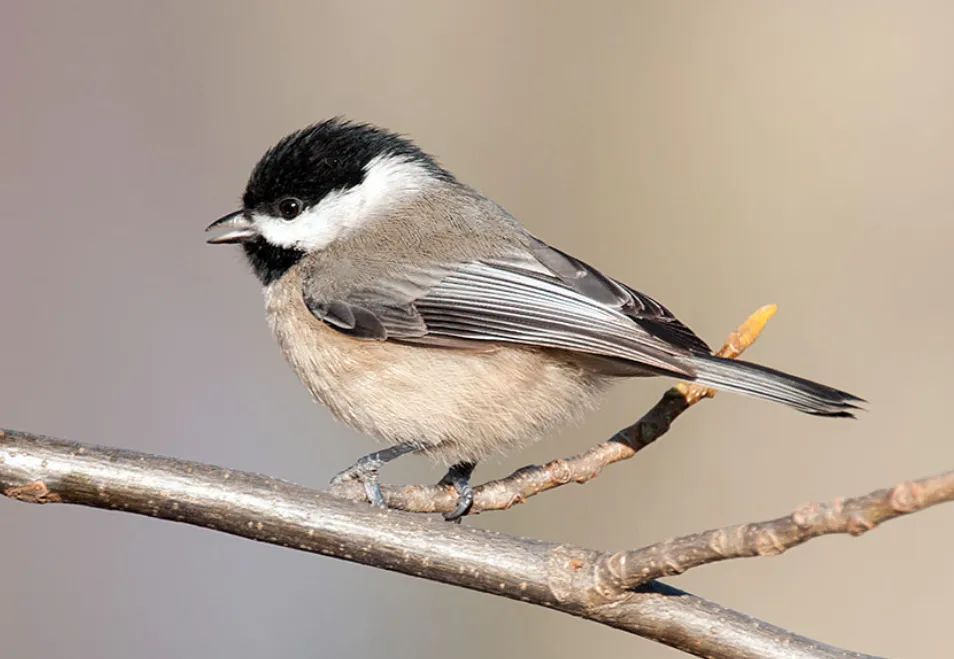
The Carolina Chickadee is a small songbird with a black cap and bib, gray upperparts, and white underparts. They have a wingspan of about eight inches and weigh only half an ounce.
Their diet consists mainly of insects but will also eat some seeds. They are found in woodlands throughout the eastern United States, nesting in tree cavities. Carolina Chickadees are non-migratory, meaning they will stay in their territory year-round.
These birds are very active and are constantly moving about, hopping and clinging to tree branches in search of food. They are also known to be one of the few animals that can lower their body temperature at night to conserve energy, a process called torpor.
Carolina Chickadees are social birds and often form small flocks with other chickadees and nuthatches. They are also known to be one of the few animals that can lower their body temperature at night to conserve energy, a process called torpor.

Evening Grosbeak – Coccothraustes vespertinus
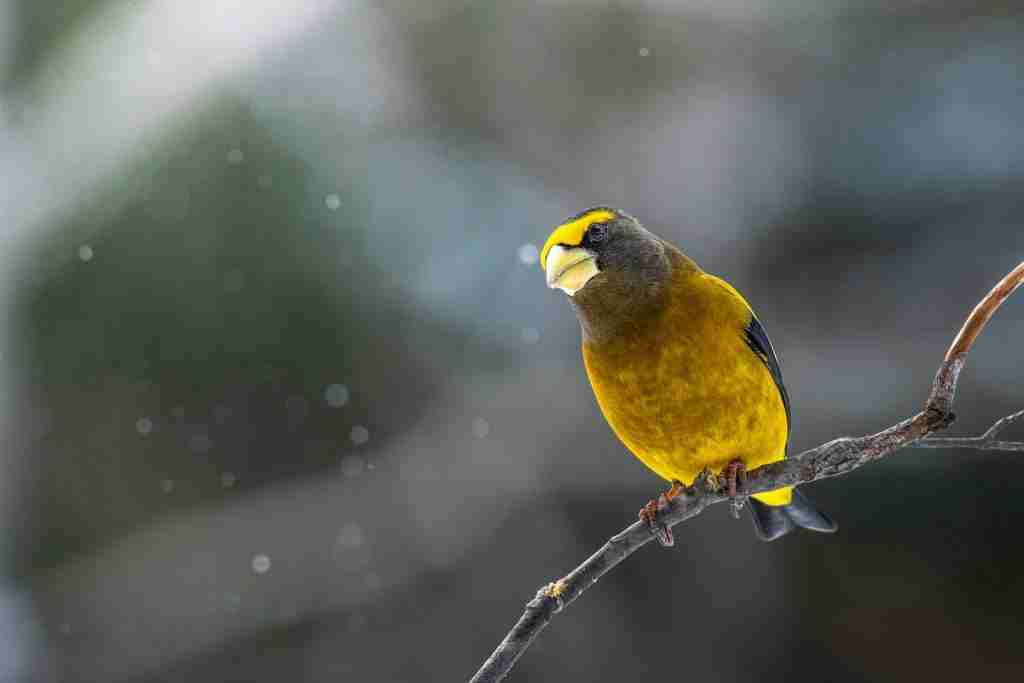
The evening grosbeak is a large finch with a heavy bill. Males have black heads and backs with yellow shoulders and wings. Females are similar but have brown instead of black on their heads and backs.
Evening grosbeaks eat seeds, fruits, and insects. They often visit backyard backyard feeders. These birds nest in coniferous trees. Evening grosbeaks are found in the northern parts of North America.
Some birds migrate south in the winter while others stay put. These birds are social and often travel in flocks.
The evening grosbeak is a beautiful bird that is a joy to see at backyard bird feeders.

Purple Finch – Haemorhous purpureus
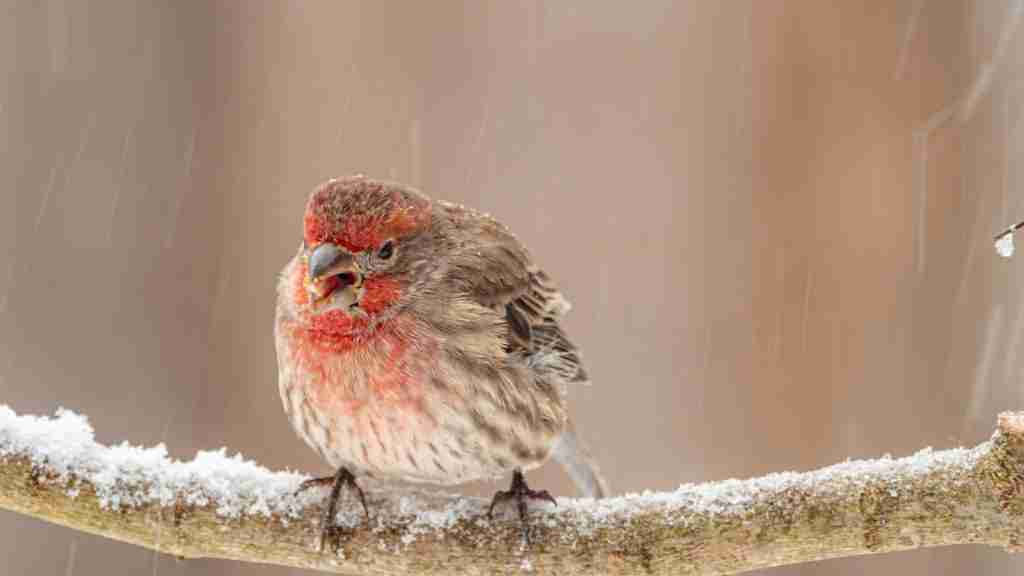
The Purple Finch is a small songbird with a short, thick bill. The adult male has reddish-purple plumage and the female has duller brownish-red plumage.
These birds are found in woodlands and forests across North America. Their diet consists of seeds, fruits, and insects. They build their nests in trees and shrubs. The Purple Finch is a non-migratory bird.
The best way to identify a Purple Finch is by its plumage. The adult male has reddish-purple upperparts and pale underparts. The female has duller brownish-red upperparts and pale underparts. These birds are small, with a short, thick bill. They have a wingspan of about 12 inches.
The Purple Finch is found in woodlands and forests across North America. In the summer, they can be found in southern Canada and the northern United States. In the winter, they range from southern Canada to northern Mexico.
The diet of the Purple Finch consists of seeds, fruits, and insects. They feed on the ground or in trees. In the winter, they often eat berries and acorns.
The Purple Finch builds its nest in trees or shrubs. The female lays three to five eggs per clutch. The incubation period is 12 to 14 days. Both parents help care for the young.
The Purple Finch is a non-migratory bird. They are usually found in the same area year-round. However, some birds may move south in the winter if food is scarce.
The Purple Finch is a shy bird that is not often seen. However, their song is a beautiful trill that can often be heard in the woods. These birds are most active at dawn and dusk. During the day, they often rest in trees or bushes.

Blue Jays
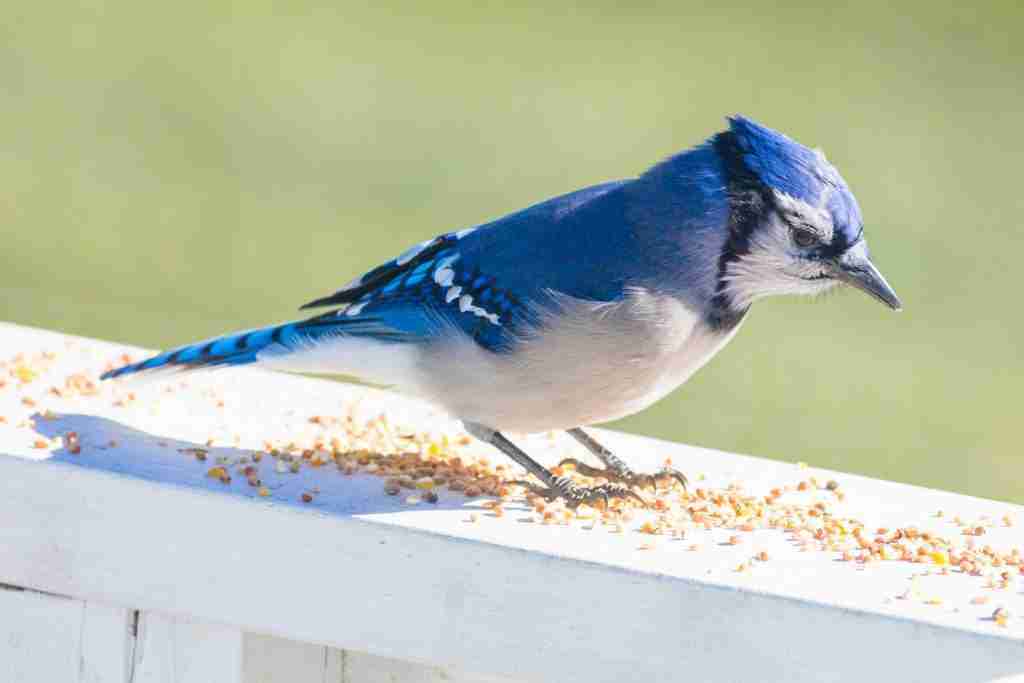
are one of the most common birds in West Virginia. They are easily identified by their blue feathers and white chest. Blue Jays are also known for their loud calls.
Blue jays are mostly found in forests but can also be seen in urban areas. They eat a variety of food including insects, nuts, and berries. Blue jays are one of the largest birds in the crow family. They can grow up to 12 inches long and have a wingspan of up to 24 inches.
Blue jays are social birds and are often seen in pairs or small groups. They are known to be aggressive towards other animals, including other birds. Blue jays will also build nests in trees and lay up to six eggs at a time.

Red-bellied Woodpecker
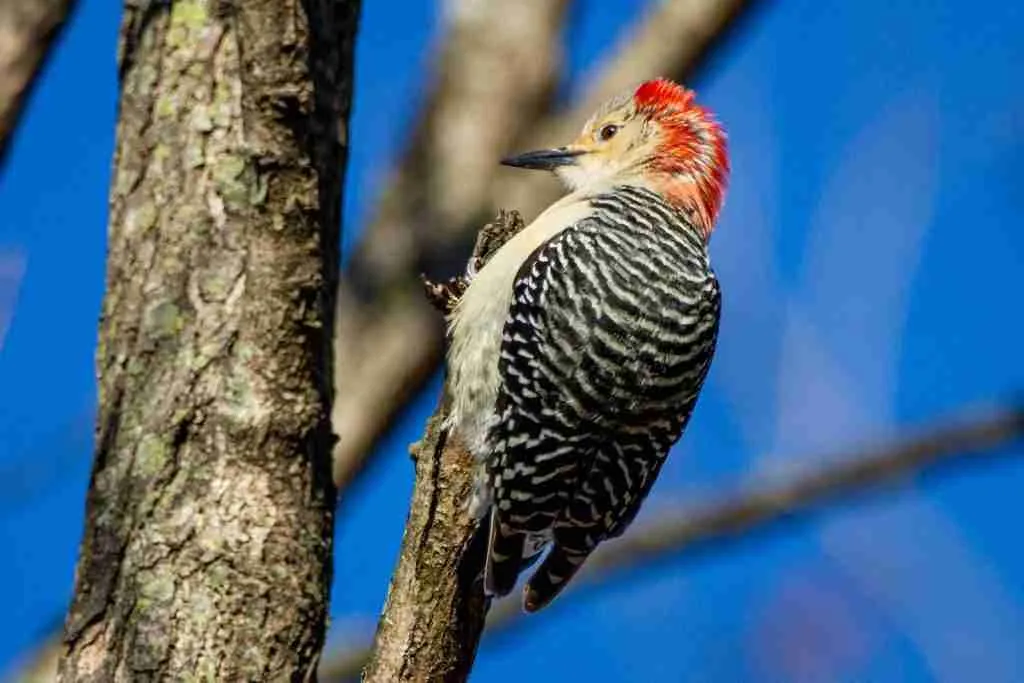
(Melanerpes carolinus): The red-bellied woodpecker is a small to medium-sized woodpecker with black and white plumage and a reddish wash on its belly. Males have a red cap, while females have a black cap.
These birds are found in woods and forests across the eastern United States, where they feed on insects, fruits, and nuts. They nest in tree cavities and lay between four and six eggs. Red-bellied woodpeckers are shy birds that are not often seen by humans.
The red-bellied woodpecker is a small to medium-sized woodpecker with black and white plumage and a reddish wash on its belly. These birds are found in woods and forests across the eastern United States, where they feed on insects, fruits, and nuts.
They nest in tree cavities and lay between four and six eggs. Red-bellied woodpeckers are shy birds that are not often seen by humans.

Northern Cardinals
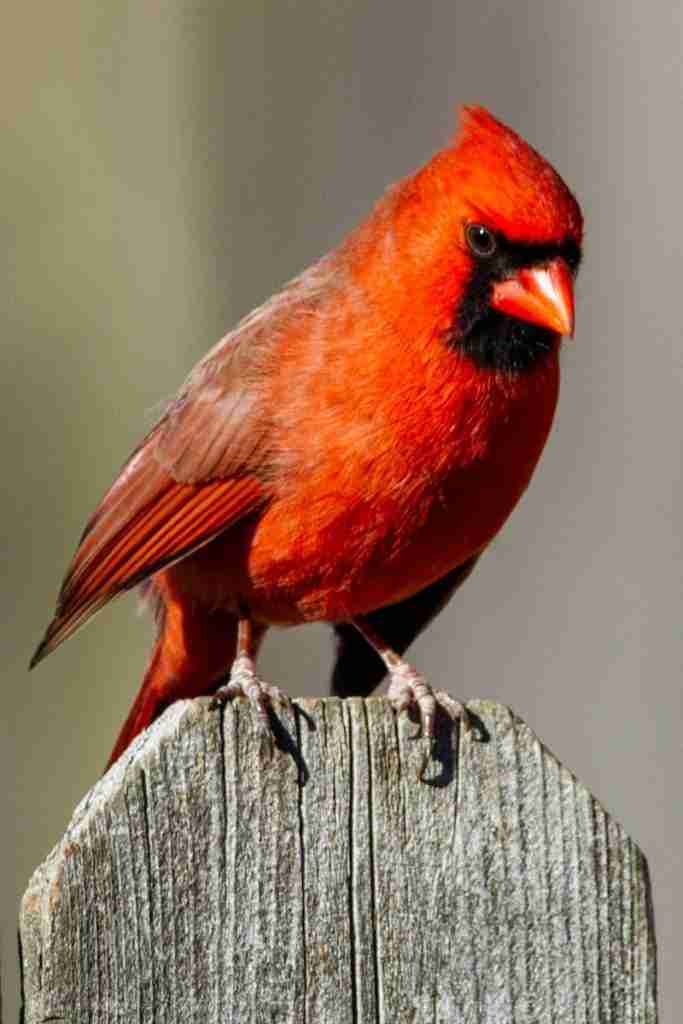
Northern Cardinals are fairly large songbirds. The adult male has brilliant red plumage all over, while the female is a more subdued reddish-brown overall.
They are well known for their loud and melodious singing, which often sounds like they are saying “cheer, cheer, cheer!” Cardinals also have prominent crests on their heads, which they often hold upright.
Both male and female cardinals are seed-eaters, but they also consume insects, especially during the nesting season. Cardinals often eat from tube feeders and on the ground beneath bird feeders. In the wild, their diet consists mostly of seeds, fruits, and insects.
Cardinals are fairly large birds, measuring about 21 cm in length and weighing around 50 grams. They have a wingspan of about 30 cm.
Cardinals are found in woodlands, gardens, and backyards across North America. They are year-round residents in much of the southern United States, but they only breed in areas where there is no snow on the ground. In the winter, some cardinals may migrate to areas where there is more food available.

What is the most common bird in WV?
The most common bird in WV is the Mourning Dove.
How do I identify a bird in my backyard?
There are a few key things to look for when trying to identify a bird in your backyard. First, take a look at the bird’s overall shape and size. This can help you narrow down the possibilities of which type of bird it might be. Next, take a look at the bird’s coloring and patterns.
This can also help you eliminate some possibilities and narrow down your search. Finally, take a look at the bird’s behavior. This can be a helpful clue in identifying which type of bird it might be. By taking all of these factors into account, you should be able to identify the bird in your backyard.
What birds stay in WV in winter?
One common bird that stays in West Virginia during the winter is the Northern Cardinal.
What kind of sparrows are in West Virginia?
There are six different types of sparrows that can be found in West Virginia. They are the chipping sparrow, field sparrow, fox sparrow, house sparrow, song sparrow, and white-throated sparrow. All of these types of sparrows are interesting in their own way and provide a unique contribution to the state’s ecosystem.
Bird feeders
Bird feeders are a great way to attract birds to your backyard, but it’s important to choose the right type of feeder for the types of birds you want to attract. There are many different types of bird feeders available on the market, so it’s important to do your research before making a purchase.
If you’re looking for a specific type of bird feeder, such as a hummingbird feeder, there are many different brands and styles to choose from. It’s important to read reviews before purchasing a feeder, as some models can be difficult to clean or may not work well with certain types of bird food.
When it comes to choosing the right type of bird food for your feeder, there are a few things to keep in mind. Some birds prefer certain types of seeds, while others may prefer fruits or nuts. It’s important to experiment with different types of food to see what your local birds are most attracted to.

An avid ornithologist, zoologist and biologist with an unwavering passion for birds and wild animals.
Dr. Wilson’s journey in ornithology began in childhood and led him to obtain a Ph.D. in Ornithology from the prestigious Avian Research Institute. He has worked closely with renowned experts in the field and conducted extensive research and field studies globally.

